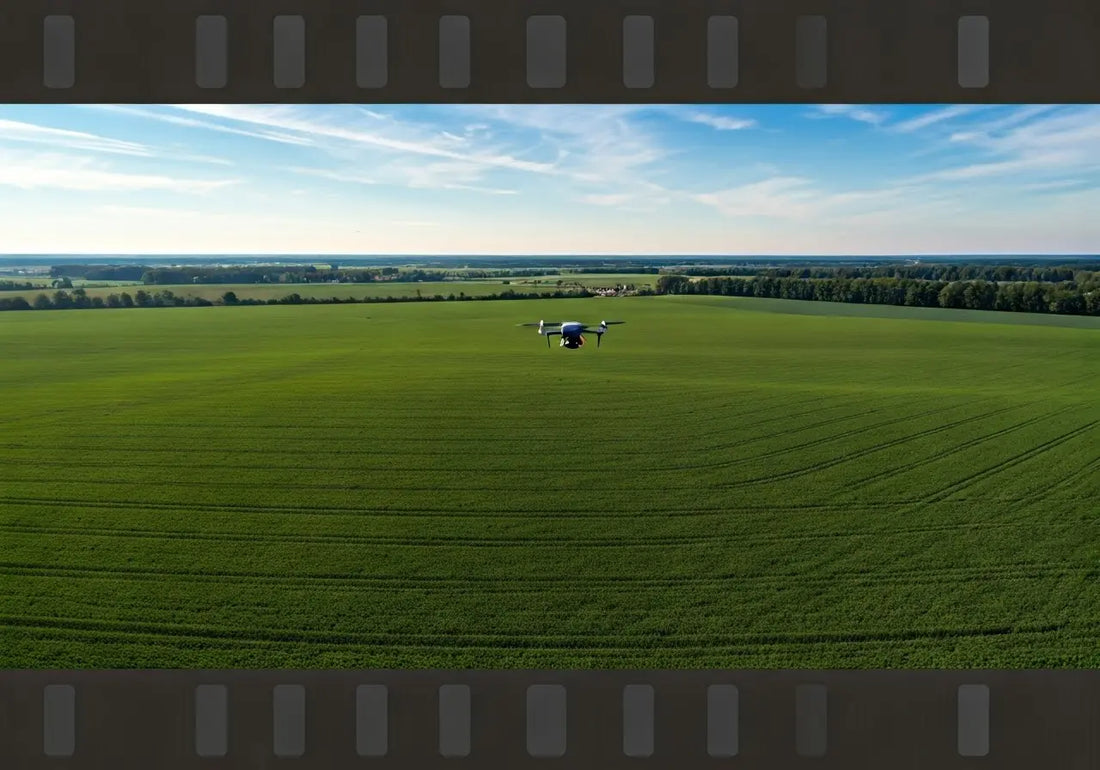
Unlocking Efficiency: How DJI Relay Transforms Agriculture
Share
In the fast-evolving world of agriculture, efficiency is key to meeting growing demands and maintaining sustainability. Modern technology continuously provides farmers with groundbreaking tools, and one such innovation making waves is DJI Relay. This powerful tool promises to reshape agricultural practices and boost productivity. Let’s explore how DJI Relay is unlocking efficiency in farming.
Understanding DJI Relay Technology
DJI Relay is not just another tool in the box; it’s a game-changer. This technology leverages advanced drone capabilities and integrates them with automated solutions to streamline agricultural processes. By understanding its core features and functionalities, farmers can harness its potential to its fullest.
At its heart, the DJI Relay serves as an extension of the drone’s existing communication capabilities, empowering it to navigate broader areas with a sustained signal. This is crucial for vast farmland where coverage needs to be uncompromising. Unlike traditional drone systems, DJI Relay enhances the data relay process, ensuring consistent communication even in challenging topographies. This is particularly beneficial in terrains that disrupt traditional signals, such as hilly or densely forested areas. By utilizing this technology, farmers not only increase coverage but also ensure that the data collected is both accurate and timely, enabling them to make informed decisions rapidly.
Enhancing Crop Monitoring and Management
Monitoring vast acres of crops can be daunting, but DJI Relay alleviates this challenge by providing precise and actionable insights. The technology facilitates real-time monitoring, helping farmers detect issues early and manage their crops more efficiently. Employing drones equipped with DJI Relay, farmers can monitor the health of their crops more closely than ever. The system allows for seamless integration with existing monitoring solutions, providing an in-depth analysis of crop health, soil moisture, and pest infestation levels. This ensures that farmers can take pre-emptive action long before minor issues escalate into larger problems, thus saving both time and resources.
In addition to real-time data collection, DJI Relay integrates AI algorithms that assist in predicting crop diseases and pest outbreaks. By interpreting patterns and anomalies from the data gathered, these advanced systems alert farmers to potential risks, facilitating a proactive approach to crop management. This predictive capability is a critical component in modern agriculture, transforming the way farmers engage with their environment, moving from reactive to more predictive measures.
Precision Agriculture in Action
Precision agriculture is revolutionized through DJI Relay. With its ability to deliver exact measurements and analyses, farmers can optimize inputs like water and fertilizers, ensuring resources are used efficiently while maximizing yields. Utilizing the precision capabilities of DJI Relay, farmers can create customized irrigation and fertilization plans tailored to the specific needs of each plot of land. This enhances the efficient use of water and nutrients, reducing excesses that could lead to wastage or environmental damage. Furthermore, such cost-effective practices are essential for small to mid-sized farms looking to enhance productivity without incurring extra costs.
The precision brought by DJI technology is not limited to resource management alone. The integration of DJI Relay with GIS (Geographic Information Systems) facilitates detailed mapping and zoning of agricultural fields. This allows for targeted interventions, ensuring specific areas receive the attention they need based on current data trends. By analyzing this data, farmers can predict upcoming trends and adjust their cultivation practices accordingly, maximizing the potential of every acre. Techniques such as variable rate application, where seeds or fertilizers are applied variably across a field based on need, are implemented seamlessly with DJI Relay-enabled systems.
Automating Labor-Intensive Tasks
Manual labor in agriculture is often intensive and time-consuming. DJI Relay steps in to automate tasks such as planting, spraying, and harvesting, saving time and reducing operational costs. By automating these labor-intensive tasks, farmers can focus on other critical areas of farm management without compromising productivity. The Relay can coordinate multiple drones working in tandem, ensuring tasks like planting and spraying are carried out with precision and speed. This not only increases efficiency but also frees up human resources for more strategic roles, creating a smart allocation of manpower.
Beyond the basic tasks, the integration of DJI Relay with autonomous drones allows for systematic, scheduled tasks that can operate without continuous human oversight. This is especially beneficial during peak planting or harvesting seasons when time is of the essence. Drones can operate autonomously during daylight hours and even continue some operations into nighttime with adequate planning, covering larger areas than human-controlled operations would generally allow. This autonomy is a key feature that underscores the capacity of DJI Relay to revolutionize traditional farming methods into self-sustaining systems.
Environmental Impact and Sustainability
DJI Relay not only boosts efficiency but also supports sustainable farming. By optimizing resource usage and minimizing waste, this technology contributes to reducing the environmental footprint of agricultural practices. Targeted application of fertilizers and pesticides reduces runoff and prevents the contamination of nearby waterways, a common issue in traditional farming. The ability to monitor soil health and moisture levels in real-time also allows for adjustments that protect soil integrity over the long term, promoting a cycle of growth that prioritizes environmental wellbeing.
Incorporating DJI Relay into agricultural practices aligns with broader global agricultural goals aimed at sustainability and reducing carbon footprints. The technology’s ability to optimize field treatments not only conserves resources but also reduces fuel consumption from frequent machine operations. Reduced resource wastage means fewer agricultural by-products are left to decompose, which in turn reduces emissions associated with traditional farming methods. This integration of eco-conscious practices without sacrificing yield is crucial for meeting the food demands of a growing global population while preserving the planet.
Embracing the Future with DJI Relay
As we delve deeper into the digital age, embracing technology like DJI Relay is essential for the agricultural sector. Its ability to enhance operational efficiency, coupled with its precision and real-time data capabilities, makes it an invaluable asset for modern farmers. By integrating such innovations, agriculture is set to transform, promising a sustainable and productive future. For further insights on how DJI Relay enhances drone performance for agriculture, read more on DJI Relay in Agriculture. Discover how our comprehensive drone solutions can elevate your farming efficiency.

